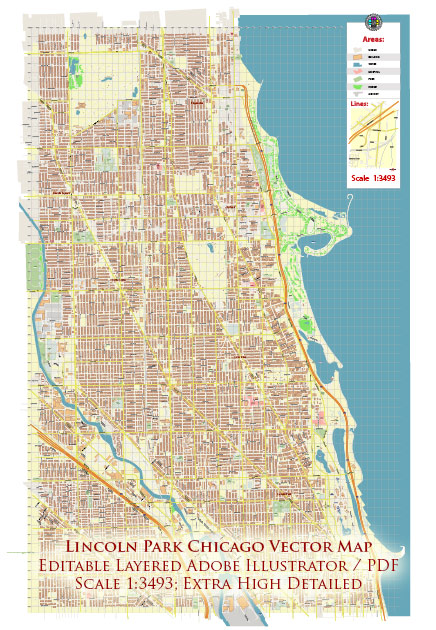Lincoln Park in Chicago, Illinois, has a rich history that dates back to the mid-19th century. It is one of the city’s most famous and beloved public spaces. Here’s a brief history of its creation:
- Early Settlement: Chicago’s rapid growth in the mid-1800s led to a need for public green spaces to provide relief from the city’s industrial and urban environment. In the 1850s, the area now known as Lincoln Park was sparsely populated and largely undeveloped.
- Cemetery Origins: The land that would become Lincoln Park originally served as a cemetery. The City Cemetery was established in 1843, and it quickly filled with the bodies of cholera victims and other deceased individuals. This cemetery was plagued with issues, including poor maintenance and overcrowding, leading to calls for its relocation.
- The Chicago City Council’s Decision: In 1860, the Chicago City Council decided to convert the City Cemetery into a public park. This decision was influenced by the “rural cemetery” movement of the 19th century, which promoted the creation of picturesque, park-like cemeteries as places of recreation and contemplation.
- Transforming the Cemetery: The process of converting the cemetery into a park was a significant undertaking. Bodies were exhumed and reburied in other cemeteries, and the land was redeveloped. The park’s transformation included the removal of headstones and the planting of trees and landscaping.
- Landscaping and Expansion: The park was named Lake Park until 1865 when it was renamed Lincoln Park in honor of President Abraham Lincoln, who had been assassinated that year. The park continued to be expanded and developed over the years, with the addition of lagoons, bridges, walking paths, and various recreational facilities.
- Architectural Additions: Several notable architectural features were added to the park, including the Lincoln Park Conservatory (built in the late 1800s) and the Lincoln Park Zoo (founded in the late 19th century), which remains one of the oldest zoos in the United States.
- The Great Fire of 1871: The park played a crucial role in the aftermath of the Great Chicago Fire of 1871. Many people sought refuge in the park as their homes were destroyed. The park also served as a staging area for relief efforts.
- Cultural and Recreational Center: Over the years, Lincoln Park has become a cultural and recreational hub for Chicagoans. It hosts various events, including outdoor concerts, art festivals, and a wide range of recreational activities.
Today, Lincoln Park is one of the most vibrant and iconic neighborhoods in Chicago, known for its beautiful lakefront views, cultural attractions, and green spaces. The park’s transformation from a cemetery to a bustling urban park reflects the evolution of Chicago itself as a city.


 Author: Kirill Shrayber, Ph.D.
Author: Kirill Shrayber, Ph.D.